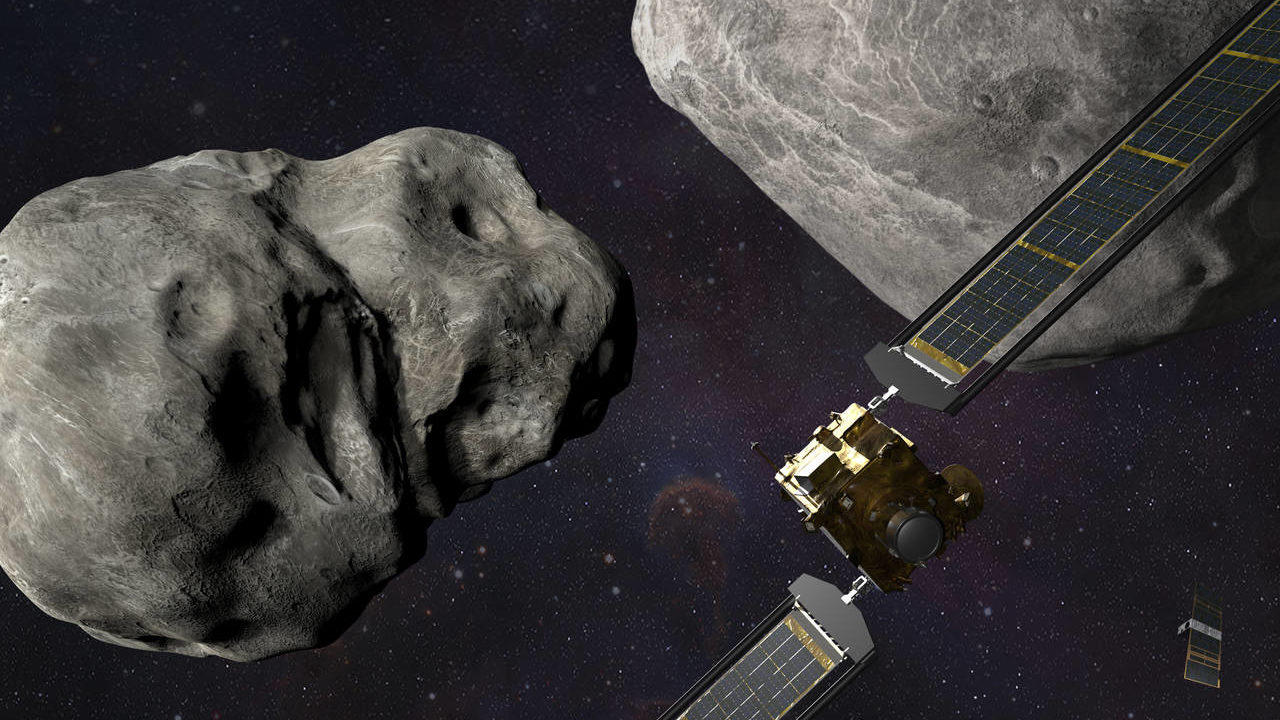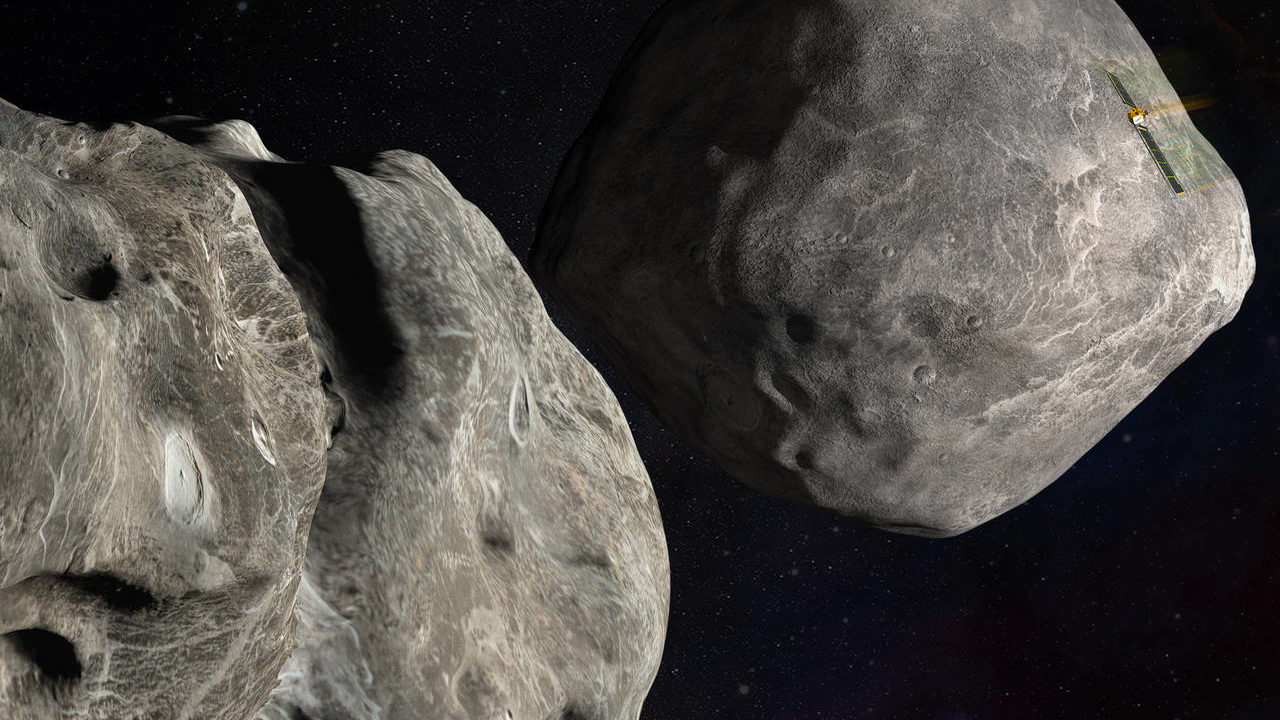DART asteroid deflection mission had all eyes on planetary defense
Sep 28, 2022, 2:00 PM

This illustration made available by Johns Hopkins APL and NASA depicts NASA's DART probe, foreground right, and Italian Space Agency's (ASI) LICIACube, bottom right, at the Didymos system before impact with the asteroid Dimorphos, left. DART is expected to zero in on the asteroid Monday, Sept. 26, 2022, intent on slamming it head-on at 14,000 mph. The impact should be just enough to nudge the asteroid into a slightly tighter orbit around its companion space rock. (Steve Gribben/Johns Hopkins APL/NASA via AP)
(Steve Gribben/Johns Hopkins APL/NASA via AP)
All eyes were on the skies Monday, as a tiny spacecraft launched from earth last November attempted to deflect an asteroid from its orbital position around a parent body.
The asteroid is a small binary asteroid discovered here in Arizona back in 1996 at the Spacewatch telescope in southern Arizona.
Here is more on the Spacewatch program.
Here is more on the discovery of the binary asteroid, known as Didymos.
The spacecraft was a joint mission between NASA, Johns Hopkins and the Italian Space Agency.
The small spacecraft was aimed at the small satellite asteroid Dimorphos — which is some 520 feet in diameter — and slammed into it at some 14,000 mph.
This was observed and documented by another small spacecraft known as LICIAcube, which followed right behind the primary spacecraft.
The main DRACO camera on the primary spacecraft imaged the impact in real time back to earth.
The LICIAcube then looked for any impact craters on the small asteroid.
In addition to this, earth-based telescopes looked for any visual changes in the orbit of the small asteroid.
The main goal was to see what changes can be made to deflect an incoming asteroid towards earth.
Here is a summary of the DART mission in detail.
You can learn how to be a planetary defender, too!
Planetary defense is a real topic of concern, with millions of asteroid bodies out in the solar system. This is a topic which might seem strange to many.
How can we destroy or deflect an asteroid which is coming close to or about to hit earth?
Here are some theories on that very topic.
There have been a number of asteroids which have hit earth and have caused drastic changes to our way of life. One of the more interesting events is the asteroid which created the great Arizona meteor crater near Flagstaff.
This is thought to be an object some 200 feet in diameter which created the large impact crater we see today.
Learn more about this event here.
The object which created this nearly one-mile in diameter crater is thought to have impacted with the force of a 10-megaton nuclear device, without the radiation.
If you have not visited this landmark, you really need to see it, as this is one of the most well preserved impact craters on earth. Some say that if you made the crater a sports stadium, you could fill it with seats for a million fans!
Here is information on visiting this great attraction.
Follow the DART mission live feed.
Don’t forget to look at Jupiter in the east at sunset … it is at its best!
To print your own monthly star chart, click here. To view satellites/dates/times of passage, click here.
Listen to the Dr. Sky Show on KTAR News 92.3 FM every Saturday morning at 3 a.m.
Podcasts are available here.











